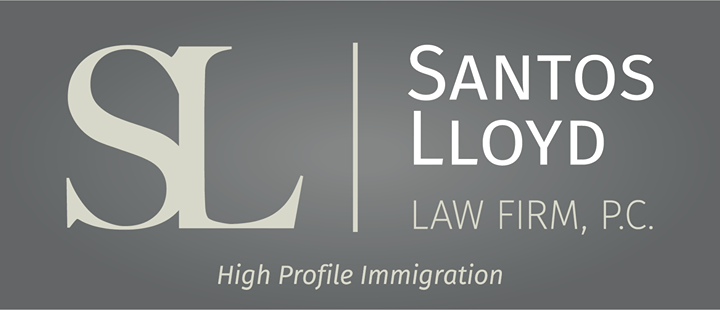Les visas d'étudiants F-1 remontent aux chiffres d'avant la pandémie après une baisse les années précédentes
Monica Zafra • November 30, 2023
Click here to read this article in English
Selon le département d'État américain, le nombre de visas F-1 délivrés à des étudiants étrangers a augmenté régulièrement au cours de l'année écoulée. Au cours de l'année fiscale 2022, 411 000 visas F-1 ont été délivrés, contre 358 000 au cours de l'année fiscale 2021. Ces chiffres montrent que les visas d'étudiants F-1 ont retrouvé leur niveau d'avant la pandémie. En 2020, seuls 111 000 visas d'étudiants F-1 ont été délivrés en raison de l'incertitude liée à la pandémie, des restrictions frontalières, des fermetures d'ambassades et d'autres obstacles empêchant les étudiants d'étudier aux États-Unis.
Le gouvernement s'attend à ce que ces chiffres continuent d'augmenter, même si le taux de rejet des demandes de visa F-1 est en hausse. En 2022, le département d'État américain a rejeté 35 % de tous les candidats F-1, ce qui représente une augmentation par rapport aux années précédentes. En outre, en mai 2023, l'U.S. Immigration and Customs Enforcement a mis fin aux directives de l'ère COVID qui permettaient aux étudiants F et M d'utiliser davantage de cours en ligne pour suivre un cursus complet.
L'augmentation du nombre de visas d'étudiants F-1 est un bon signe pour les employeurs américains, car ces personnes cherchent à étudier aux États-Unis en raison de l'excellence américaine en matière de salaires, d'opportunités, de diversité et d'encouragement des travailleurs hautement qualifiés. En s'assimilant aux États-Unis grâce à leur éducation, ils seront préparés à contribuer à la main-d'œuvre américaine.
Les personnes intéressées par une demande de visa d'étudiant F-1 sont invitées à contacter notre bureau pour une consultation et de plus amples informations.
Ce blog n'est pas destiné à fournir des conseils juridiques et rien ici ne doit être interprété comme établissant une relation avocat-client. Veuillez prendre rendez-vous avec un avocat spécialisé en droit de l'immigration avant d'agir sur la base de toute information lue ici.
Monica Zafra
Similar Posts

Once you have connected with a college program, have been admitted to the school, and deemed eligible to compete athletically, you will need to secure an F-1 student visa in order to actually attend your new college and begin your time as a student athlete. The first step in the visa process is to receive your Form I-2

For many talented athletes around the world, U.S. college athletics represent a remarkable opportunity to combine elite athletic competition with higher education. In sports such as basketball, soccer, track and field, and tennis, among others, hundreds of colleges and universities across the United States offer struct

In a renewed wave of enforcement, U.S. Immigration and Customs Enforcement (ICE) has started sending formal alerts to certain F-1 students participating in Optional Practical Training (OPT), flagging that their records reflect over 90 days without any reported employment. These students have been advised to update their employment status in the Student and Exchange Visitor Information System (SEVIS) within 15 days. Failure to take timely corrective action may lead to the termination of the student's SEVIS record, effectively marking them as out of status, and may ultimately trigger removal proceedings. The notices are intended as a warning that students who do not comply with OPT reporting obligations are at risk of serious immigration consequences. Understanding OPT and Its Unemployment Limits Optional Practical Training (commonly referred to as “OPT”) is a work authorization benefit that allows eligible F-1 international students to gain hands-on experience in their field of study. Students may apply for pre-completion OPT (while still in school) or post-completion OPT (after graduation), typically for up to 12 months. Those with degrees in qualifying STEM fields may apply for an additional 24-month STEM OPT extension, giving them a total of 36 months of work authorization in the U.S. To maintain valid F-1 status while on OPT, students must remain actively employed in a position related to their field of study. The amount of time a student may remain in the United States while on OPT without being properly employed is capped at: 90 days during the standard 12-month post-completion OPT, and 150 days for those on the STEM OPT extension, which includes any days of unemployment accrued during the initial OPT period. These unemployment limits are cumulative and enforced strictly through SEVIS monitoring. What Should F-1 Students Do? If you are an F-1 student on OPT or STEM OPT and receive a warning or are unsure about your compliance status, act quickly: Contact your Designated School Official (DSO) immediately to review and, if necessary, update your SEVIS record. Ensure all employment is properly documented and reported through your school’s international office. Do not ignore warning notices, as failure to respond may lead to SEVIS termination and potentially the initiation of removal proceedings. It is also advisable to consult with a qualified immigration attorney to explore available options and understand how enforcement actions may affect your status or future immigration plans. If you received a notice or have questions about your F-1 status, our attorneys are here to help you take the right steps to protect your future in the United States. Contact us today to schedule a consultation.

According to the U.S. State Department, there has been a steady increase of F-1 visas issued for foreign students within the past year. In Fiscal Year 2022, 411,000 F-1 visas were issued, rising from the 358,000 F-1 visas issued in the 2021 Fiscal Year. These numbers have shown that F-1 student visas have recovered to pre-pandemic numbers. In 2020, only 111,000 F-1 student visas were issued due to pandemic uncertainty, border restrictions, embassy closures, and other barriers for students to study in the United States. The government expects these numbers to continue to rise even with rising rejection rates of F-1 applicants. In 2022, the U.S. State Department rejected 35% of all F-1 applicants in 2022, an increase from previous years. In addition, in May 2023, U.S. Immigration and Customs Enforcement terminated COVID-era guidance allowing F and M students to utilize more online classes toward a full course of study. The increasing F-1 student visas are a good sign for American employers because these individuals seek to study in the United States due to American excellence in wages, opportunity, diversity, and the encouragement of highly skilled workers. By assimilating in the United States through their education, they will be prepared to contribute to the United States workforce. For those who are interested in applying for the F-1 student visa, please contact our office for consultation and further information.

Once you have connected with a college program, have been admitted to the school, and deemed eligible to compete athletically, you will need to secure an F-1 student visa in order to actually attend your new college and begin your time as a student athlete. The first step in the visa process is to receive your Form I-2

For many talented athletes around the world, U.S. college athletics represent a remarkable opportunity to combine elite athletic competition with higher education. In sports such as basketball, soccer, track and field, and tennis, among others, hundreds of colleges and universities across the United States offer struct

Under the new regulation, if a person filed or files Form I-589, Application for Asylum and for Withholding of Removal after October 1, 2024, and the application remains pending with USCIS for 365 days, the applicant must pay an Annual Asylum Fee (AAF) on the one-year anniversary of his or her filing date.



